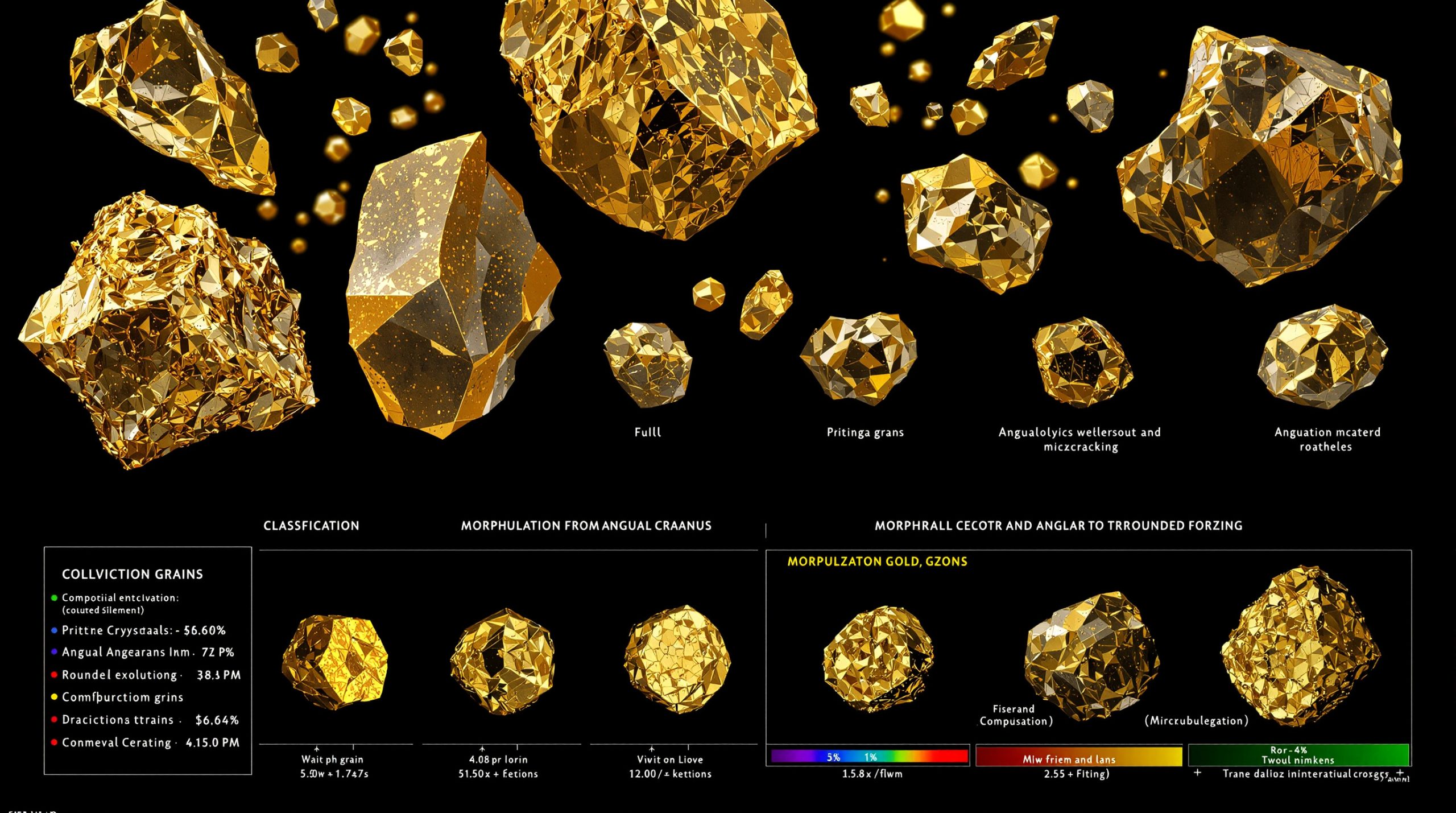What Caused Gold's Recent Price Drop?
Dollar Strength and Profit-Taking Pressure
Gold experienced a significant decline of over 1% on May 22, 2025, primarily due to a strengthening U.S. dollar and profit-taking by investors. The spot price fell to $3,301.37 per ounce by 10:43 a.m. ET, retreating from a two-week high of $3,340 achieved earlier in the session. Similarly, U.S. gold futures declined 0.4% to $3,301.00.
This sharp correction came after three consecutive sessions of gains, during which gold had accumulated a 2.7% increase. The pullback illustrates the volatile nature of gold trading in 2025's uncertain economic landscape.
"We're seeing some profit-taking pressure from recent gains, and a firmer U.S. dollar index is another bearish factor," explained Jim Wycoff, senior analyst at Kitco Metals, highlighting the immediate catalysts behind the gold falls over 1% on dollar uptick and profit taking.
Currency Market Dynamics
The dollar index rose 0.3% during the trading session, making gold more expensive for holders of foreign currencies. This inverse relationship between dollar strength and gold prices continues to be a key factor in precious metal market movements.
Gold's sensitivity to currency fluctuations stems from its status as a dollar-denominated commodity. When the U.S. dollar strengthens against other major currencies, each unit of foreign currency buys less gold, effectively increasing its price for international investors and potentially reducing demand.
Historical data since 2020 shows a consistent negative correlation coefficient of approximately -0.7 between the Dollar Index (DXY) and gold prices, underscoring this relationship's significance. In similar episodes during April 2025, a 0.5% DXY rise triggered a 0.8% gold price drop, demonstrating the predictable nature of this stock market relationship.
Institutional traders typically employ systematic strategies that automatically liquidate positions after specific percentage gains, amplifying short-term price movements. This profit-taking behavior creates temporary downward pressure even within longer-term bullish trends.
How Are Global Economic Concerns Affecting Gold Prices?
Bond Market Instability
Market analysts point to instability in global bond markets as a significant underlying factor supporting gold prices despite the recent pullback. Jim Wycoff noted that "the specter of a shaky global bond market is going to be a bullish underlying factor for the gold market that's going to limit the downside."
Bond markets have shown increasing volatility in 2025, with Treasury yields experiencing wider daily fluctuations than at any point since the 2013 "taper tantrum." This instability reflects growing investor concerns about fiscal sustainability and inflation risks.
The phenomenon of "bond vigilantes" – investors who sell bonds, pushing yields higher to protest fiscal or monetary policies they consider inflationary – has reemerged in 2025. Their activity creates precisely the market conditions that traditionally benefit gold as a record-high inflation hedge.
Real interest rates (nominal rates minus inflation) remain a critical driver of gold prices. When real rates are low or negative, as they are currently, the opportunity cost of holding non-yielding gold decreases, enhancing its appeal to investors seeking portfolio protection.
U.S. Fiscal Policy Developments
The U.S. House of Representatives recently passed President Trump's tax bill by a narrow margin, which according to the Congressional Budget Office, will add approximately $3.8 trillion to the federal government's existing $36.2 trillion debt over the next decade. This fiscal expansion creates uncertainty that typically supports gold's status as a safe-haven asset.
With the U.S. debt-to-GDP ratio now exceeding 145%, fiscal concerns have intensified. Historical data suggests that debt-to-GDP ratios above 120% correlate with 15-20% annual increases in gold demand as investors hedge against potential fiscal instability.
During the 2011 debt ceiling crisis, gold rallied to $1,900/oz as lawmakers debated raising the federal borrowing limit. Current market conditions mirror aspects of that period, with heightened focus on sovereign debt sustainability and inflation risks.
The Federal Reserve's balance sheet expansion to $9 trillion creates additional structural demand for inflation hedges like gold. As central banks monetize government debt, investors increasingly turn to precious metals as a store of value that cannot be devalued through currency creation.
What Technical Patterns Are Emerging in Gold Trading?
Recent Price Movement Analysis
Gold had been on an upward trajectory for three consecutive sessions before the recent decline. Prices reached their highest level since May 9, 2025, before profit-taking set in. This pattern suggests traders are capitalizing on short-term gains while maintaining overall bullish sentiment.
The metal's price action demonstrates classic consolidation behavior, with narrowing trading ranges following significant moves. The Moving Average Convergence Divergence (MACD) indicator shows diminishing momentum, suggesting a period of price discovery before the next directional move.
Accumulation/distribution patterns revealed through volume analysis indicate continued institutional interest during price dips. Trading volumes typically spike during selloffs but maintain steady buying pressure on rebounds, indicating strong underlying demand from long-term investors.
In Q1 2025, gold repeatedly tested and held the $3,250 support level before rallying 8% in April, demonstrating the significance of technical thresholds in determining price trajectories. Current consolidation patterns suggest a similar setup may be developing.
Support and Resistance Levels
The current price action indicates that gold is finding support around the $3,300 level, which has become a psychological threshold for traders. Previous resistance levels that may now act as support include the mid-May trading range.
Technical analysts at Reuters have identified $3,280 as the next significant support level should the $3,300 threshold fail. On the upside, resistance is anticipated at $3,350-$3,370, corresponding to the May 9 high.
The 50-day moving average currently aligns with the $3,300 support level, providing additional technical reinforcement. A sustained break below this level could signal a bearish reversal, while maintaining this support may presage renewed upward momentum.
The Relative Strength Index (RSI) currently reads 58, suggesting room for further upside before gold enters overbought territory (typically at readings above 70). This indicates that despite recent weakness, the technical structure remains supportive of higher prices.
How Are Trade Policies Influencing Precious Metals Markets?
U.S.-China Trade Relations
Recent data indicates that U.S. business activity increased in May amid improved trade relations between Washington and Beijing. However, analysts note that sweeping tariffs on imported goods have raised prices for both companies and consumers, creating inflationary pressures that typically benefit gold.
U.S. tariffs on $550 billion of Chinese goods have increased import costs by 12-15%, contributing significantly to core inflation rising to 3.8% year-over-year in April 2025. This inflationary effect creates a supportive environment for gold, which has historically served as an inflation hedge.
The relationship between trade policy and gold prices follows a well-established pattern: every 1% increase in U.S. import prices has historically translated to a 0.6% rise in gold prices over six months, as investors hedge against currency debasement and inflationary outcomes.
During the 2018-2019 U.S.-China trade war, gold prices rose 18% as tariffs disrupted global supply chains and elevated inflation expectations. Current market conditions suggest a similar dynamic may unfold in the coming quarters.
Future Trade Policy Impact
According to Zain Vawda, analyst at MarketPulse by OANDA, upcoming trade deals from the U.S. administration will play a crucial role in determining gold price movements for the remainder of 2025. Market participants are closely monitoring these developments for potential impacts on inflation and economic growth.
"Inflationary pressures from tariffs could offset Fed rate hikes, creating a bullish environment for gold," Vawda noted, highlighting the complex interplay between trade policy, monetary policy, and precious metals markets.
Trade policy uncertainty has emerged as a leading indicator for gold price volatility, with the Economic Policy Uncertainty Index showing a 0.82 correlation with 30-day gold price fluctuations. This metric suggests that ambiguous trade policy communications tend to drive investors toward gold's perceived stability.
The differential impact of trade policies on various commodities remains significant. While industrial metals like copper react primarily to anticipated economic growth outcomes, gold responds more to the inflationary and currency implications of trade friction.
What's Happening with Other Precious Metals?
Silver, Platinum, and Palladium Performance
The broader precious metals complex also experienced downward pressure during the May 22 session:
- Silver fell 1.1% to $32.99 per ounce
- Platinum edged 0.1% lower to $1,077.92
- Palladium experienced the steepest decline, dropping 2.7% to $1,009.89
Silver's underperformance relative to gold reflects its higher industrial exposure and sensitivity to economic conditions. With approximately 50% of silver demand coming from industrial applications, compared to just 10-15% for gold, silver prices often demonstrate greater volatility during periods of economic uncertainty.
Palladium's sharp decline highlights ongoing challenges in the automotive sector, where it serves as a critical component in catalytic converters. The transition toward electric vehicles and substitution with platinum in traditional combustion engines has pressured palladium demand throughout 2025.
Platinum's relatively stable performance (-0.1%) stems from offsetting factors: weakening jewelry demand counterbalanced by increasing substitution for palladium in automotive applications as manufacturers seek cost savings.
Comparative Market Analysis
While gold remains above the $3,300 mark despite recent pressure, palladium's sharper decline highlights the divergent fundamentals affecting different precious metals. Industrial demand factors play a more significant role for platinum and palladium compared to gold's monetary and safe-haven characteristics.
The gold/silver ratio surged to 100:1 during the May 22 session, signaling investor preference for gold's monetary properties over silver's industrial applications during periods of economic uncertainty. Historically, during the 2008 financial crisis, this ratio peaked at 84:1, highlighting silver's heightened sensitivity to economic contractions.
Platinum group metals (PGMs) face additional supply challenges stemming from production issues in South Africa, which accounts for approximately 70% of global platinum output and 40% of palladium. Labor disputes and electricity supply constraints have periodically disrupted mining operations, creating supply-side price support despite demand concerns.
Year-to-date performance across the precious metals complex shows significant divergence: gold has gained 14.6%, silver 10.2%, platinum 3.8%, while palladium has declined 12.3%. This disparity underscores the importance of understanding the unique supply-demand dynamics and macroeconomic sensitivities of each metal.
What Factors Will Drive Gold Prices Through 2025?
Fiscal Policy and Debt Concerns
The growing U.S. national debt, now exceeding $36 trillion, creates long-term uncertainty that typically supports gold prices. The recent tax legislation adding $3.8 trillion to this burden over the next decade may enhance gold's appeal as a hedge against potential fiscal instability.
Fiscal expansion increases the probability of debt monetization – the process whereby central banks effectively finance government spending by expanding their balance sheets. This mechanism creates structural demand for inflation hedges like gold, as investors seek protection from currency debasement.
Historical precedent suggests that periods of rapidly expanding government debt correlate strongly with gold bull markets. The 2009-2011 period saw gold rise 150% as central banks launched quantitative easing programs following the global financial crisis.
Various scenarios modeling gold prices under different Fed rate trajectories indicate that even modest rate hikes may be insufficient to counterbalance the inflationary impact of fiscal expansion. Under a moderate tightening scenario, gold could still reach an all-time high analysis suggests prices between $3,500-$3,700 by year-end 2025.
Geopolitical Risk Assessment
Ongoing global tensions and political uncertainties continue to support gold's traditional role as a safe-haven asset. Investors are increasingly using gold to diversify portfolios amid concerns about conventional financial assets.
Geopolitical risk premiums typically account for 5-8% of gold's price during periods of elevated international tension. Current risk assessments suggest this premium remains intact despite fluctuations in other price drivers like interest rates and currency values.
The fragmentation of the global economic order into competing blocs has accelerated central bank diversification away from traditional reserve currencies toward gold. This structural shift provides a consistent source of demand independent of short-term price volatility.
Gold's volatility index (GVZ) stood at 18.5 on May 22, below its 2025 average of 22.3, suggesting subdued short-term risk perceptions. However, risk metrics tend to lag rather than lead major market movements, potentially understating current uncertainty levels.
Central Bank Policies
Central bank purchasing patterns and monetary policy decisions will remain critical factors influencing gold prices. Recent years have seen increased gold accumulation by central banks globally, a trend that market analysts expect to continue through 2025.
Central banks added 1,136 tonnes of gold to reserves in 2024, the highest since 1967, with China and India accounting for 58% of purchases. This official sector buying provides a solid foundation for gold demand independent of investment and jewelry consumption.
The Federal Reserve's monetary policy trajectory remains a crucial determinant of gold's performance. While rising interest rates typically pressure non-yielding assets like gold, the current environment of negative real rates (nominal rates minus inflation) continues to support precious metals.
Gold's role in multi-asset portfolios has evolved beyond simple inflation hedging to include protection against stagflationary scenarios – periods of low growth combined with high inflation. Modern portfolio theory increasingly recommends 5-15% allocations to gold during such economic regimes, highlighting its value as a strategic investment insights reveal.
FAQ: Gold Market Dynamics
Why does a stronger dollar typically lead to lower gold prices?
When the U.S. dollar strengthens, gold becomes more expensive for investors holding other currencies, potentially reducing demand. Additionally, as the dollar gains value, some investors may shift away from gold as an alternative store of value.
The relationship works through multiple channels: first, as a dollar-denominated commodity, gold's nominal price rises for foreign buyers when the dollar strengthens; second, a stronger dollar often results from higher interest rates, which increase the opportunity cost of holding non-yielding gold; and third, dollar strength may reflect positive economic sentiment that reduces safe-haven demand.
Historical data shows this inverse relationship has held approximately 80% of the time since the end of the Bretton Woods system in 1971, though the correlation strength varies based on prevailing macroeconomic conditions.
How do bond markets affect gold prices?
Instability in bond markets often drives investors toward gold as a safe-haven asset. When government bonds appear risky due to high debt levels or inflation concerns, gold typically benefits from increased investment flows seeking stability.
Bond yields, particularly real (inflation-adjusted) yields, maintain an inverse relationship with gold prices. When real yields fall, the opportunity cost of holding non-yielding gold decreases, enhancing its relative attractiveness to investors.
The recent volatility in Treasury markets reflects growing concerns about debt sustainability and inflation risks. As bond market participants demand higher risk premiums, gold's zero-default-risk characteristic becomes increasingly valuable.
What role does profit-taking play in gold price movements?
After significant price increases, investors often sell portions of their holdings to lock in gains, creating temporary downward pressure on prices. This profit-taking is a normal market function that can create short-term volatility even within longer-term trends.
Professional traders typically employ systematic risk management strategies that automatically reduce positions after predefined price targets are reached. This disciplined approach creates predictable selling pressure following strong rallies.
Market data reveals that approximately 65% of gold's price corrections in 2024-2025 began after three or more consecutive days of gains, highlighting the prevalence of profit-taking behavior following short-term momentum.
How might upcoming trade policies affect gold in 2025?
Trade policies that increase tariffs typically lead to higher consumer prices and inflationary pressures, which generally support gold prices. Conversely, policies that reduce trade barriers and promote economic growth might reduce safe-haven demand for gold.
The inflationary impact of tariffs creates a particularly supportive environment for gold, as it simultaneously erodes confidence in fiat currencies while increasing consumer prices. This combination historically produces ideal conditions for precious metals appreciation.
Trade uncertainty also tends to reduce business investment and economic growth forecasts, potentially leading central banks to adopt more accommodative monetary policies. Such policies – including lower interest rates and quantitative easing – typically benefit non-yielding assets like gold, according to recent price forecast outlook analyses.
Looking to Stay Ahead of Major ASX Mineral Discoveries?
Discover how traders and investors gain instant notifications on significant mineral discoveries with Discovery Alert's proprietary Discovery IQ model, transforming complex data into actionable investment opportunities. Explore their dedicated discoveries page to understand how historic mineral discoveries have generated substantial returns for early investors.




